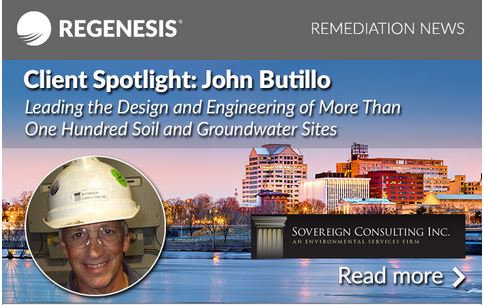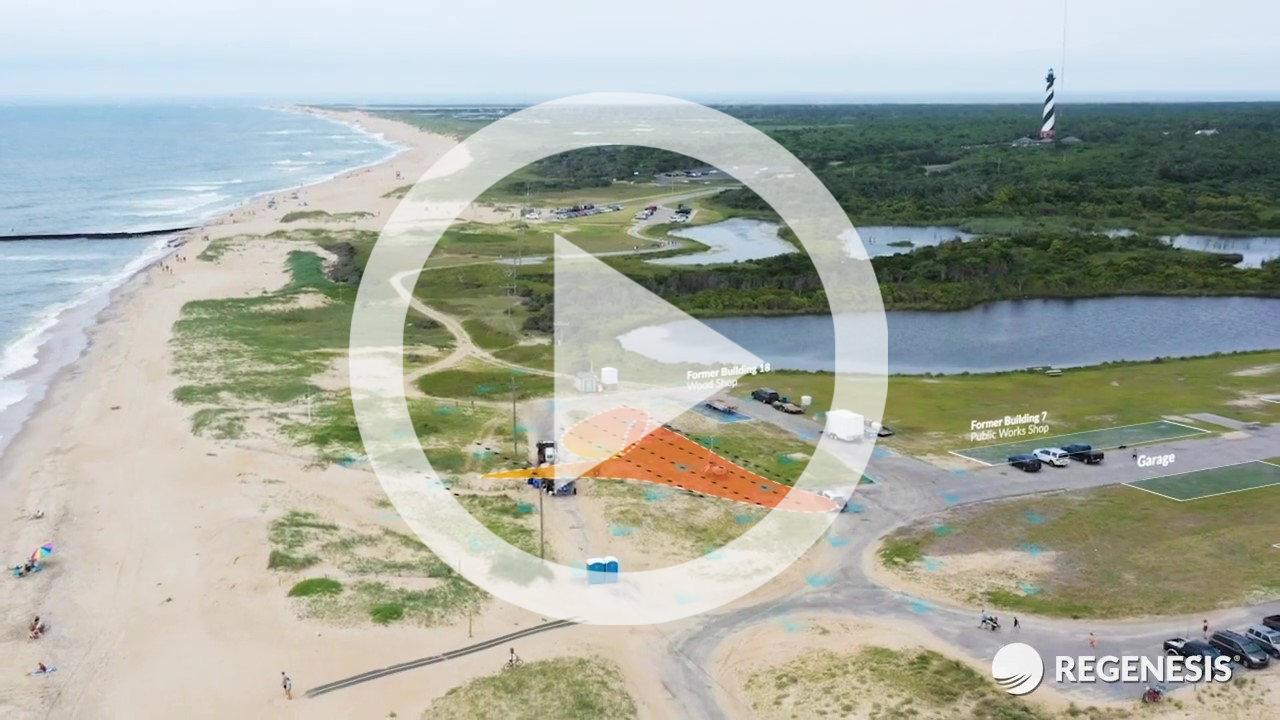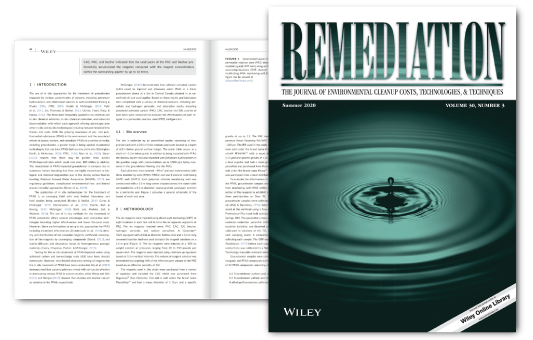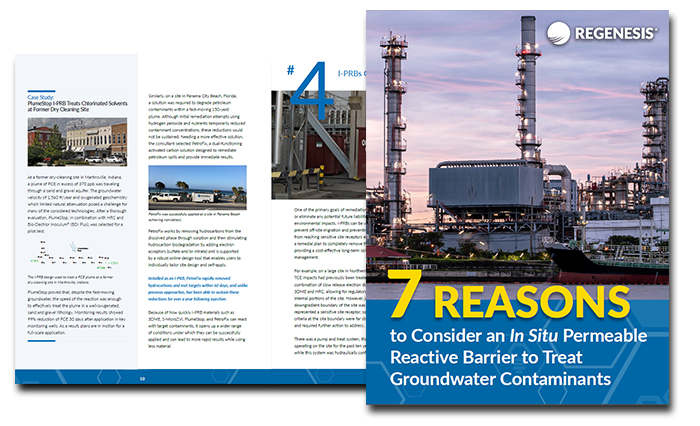August 2020 Newsletter
Client Spotlight: John Butillo
As the Engineering Manager for Sovereign Consulting Inc., John Butillo is responsible for bioremediation field application, from initial engineering design with system/plant installations, to maintenance and troubleshooting. He shares, “My technical role focuses primarily on facility engineering, permitting, project design, construction and installation of soil/groundwater remediation and wastewater treatment systems, and waste minimization programs.” Butillo has served as the lead design and implementation project manager and lead engineer on more than 100 soil and groundwater remediation projects. Learn more in our client spotlight.
Subscribe To Our Monthly Newsletters
PetroFix Applied at Former Buxton Naval Auxiliary Air Station to Treat Hydrocarbon Contaminants
This video explains the in situ remediation of hydrocarbon contaminants using PetroFix Remedial Fluid at former Buxton Naval Auxiliary Air Station. Due to contaminant level exceedances, the responsible party elected to pursue additional remediation efforts beyond monitored natural attenuation. After thoroughly evaluating remedial options, they selected PetroFix micron-scale liquid carbon amendment to capture and biodegrade the petroleum contaminants. 6,000 pounds of PetroFix were applied using direct push injection at 86 points. In addition to its ability to distribute effectively through the subsurface and reach target treatment zones, PetroFix was selected because it was the most cost-effective and least disruptive remedial approach available for the site.
Apply Activated Carbon Under Low Pressure to Treat Petroleum Hydrocarbons
Third Party Research Article – Six Studies on the In Situ Treatment of PFAS in Groundwater
eBook Provides Analysis of Effectiveness of In-Situ Permeable Reactive Barriers
Upcoming PFAS Webinar – Sign Up Today!
In this webinar we are pleased to have as a special guest speaker Rick McGregor, President of InSitu Remediation Services Ltd. His presentation will discuss six pilot-scale studies evaluating the in situ treatment of PFAS in groundwater. This free webinar begins Wednesday, August 12th, 2020 at 11am pacific/2pm eastern.
Questions?
REGENESIS has remediation experts based worldwide to assist you in your brownfield site cleanup. As the technology leader in advanced bioremediation solutions, we can help ensure success on your next remediation project. Use the map on our website to find your regional REGENESIS contact today.











